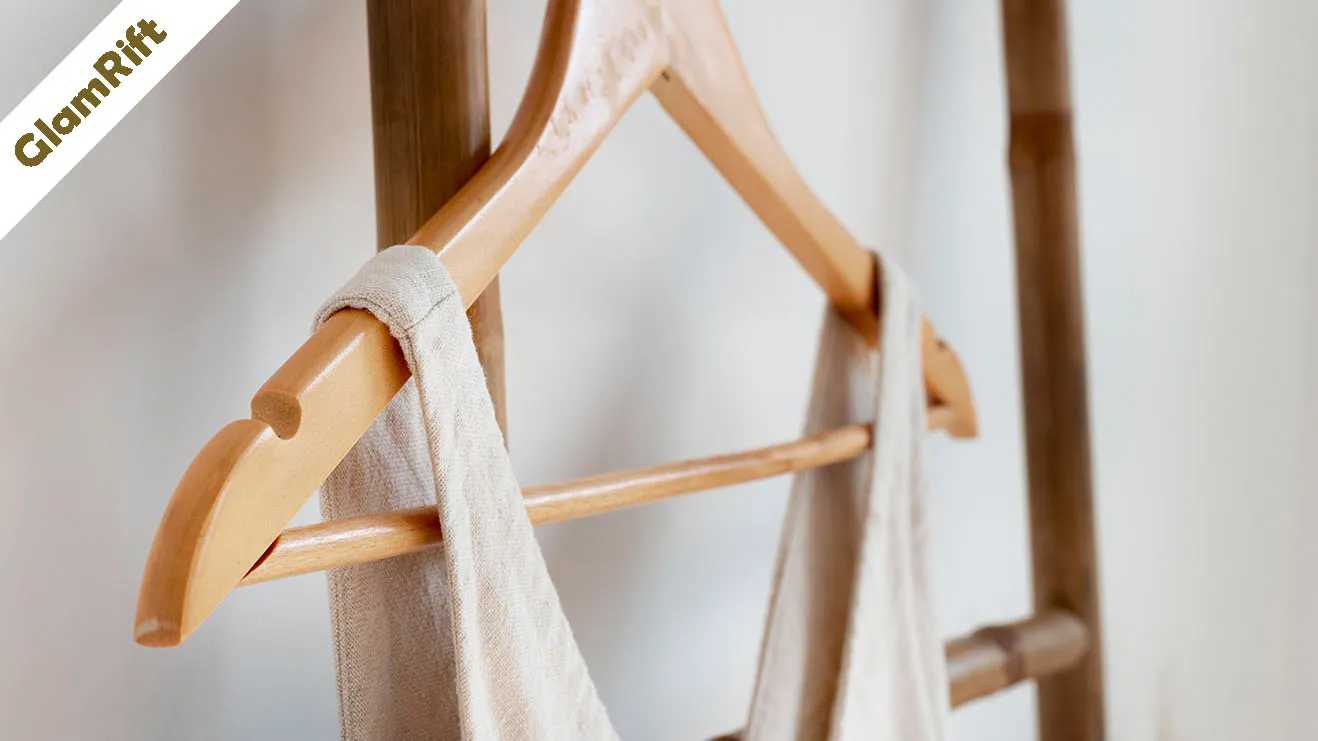You want a wardrobe that looks sharp and treads lighter in 2025, but where do you start? Sustainable wardrobes begin with buying less, choosing versatile staples, and aiming for pieces you’ll wear 30 times or more. Favor secondhand, organic cotton, Tencel, linen, and verified certifications like GOTS or GRS. Wash cold, air-dry, and mend early. Then tighten your capsule with timeless neutrals that mix easily. The tricky part is spotting greenwashing and making every purchase count—yet sustainable wardrobes make it possible to stay stylish and eco-conscious at the same time.
Key Takeaways for Sustainable Wardrobes
- Buy fewer, higher-quality pieces you’ll wear 30+ times; build a capsule of timeless, mix-and-match staples.
- Prioritize low-impact materials like organic cotton, linen, hemp, Tencel, and recycled fibers; avoid virgin synthetic-heavy blends.
- Shop secondhand first via thrift stores and resale apps; inspect condition and plan repairs to extend garment life.
- Demand brand transparency and third-party certifications (GOTS, OEKO-TEX, GRS); use Good On You to verify claims and avoid greenwashing.
- Care and repair: wash cold, air-dry, learn basic mending; donate or recycle responsibly, and engage in swaps and community repair events.
Get the 411 on Sustainable Fashion
Ready to rethink your closet? Start by embracing sustainable wardrobes that cut pollution and protect workers. The industry drives up to 10% of global emissions, so buy less and choose higher-quality pieces you’ll wear at least 30 times. Prioritize ethical fashion from transparent brands with certifications like GOTS or OEKO-TEX, and beware vague “eco-friendly” claims. Seek sustainable materials: organic cotton, linen, hemp, Tencel/lyocell, and recycled options like recycled polyester or upcycled denim.
Shop secondhand clothing on thrift racks, Depop, or Poshmark to reduce waste. Build a focused capsule wardrobe that mixes well and lasts. Care matters: wash cold, air-dry, and repair and upcycle to extend life. Every mindful choice you make supports sustainable wardrobes and keeps textiles out of landfills while shrinking your footprint.
Audit Your Closet With Purpose
Even before you buy better, audit what you own with intent—it’s the first step toward sustainable wardrobes. Empty your closet and sort item-by-item. Ask: Did I wear this in 12 months? Does it fit and still reflect my style? If not, mark it for donation, resale through thrift stores, or recycle. Triage into keep, donate, recycle. For keeps, log frequency of wear to reveal staples that could inform a future capsule wardrobe.
Evaluate condition and repairability. If it’s a quick fix, mend loose seams or replace buttons; if not worth the cost or time, recycle via local programs or retailer drop-off bins. Record fabric, age, price, and care to spot what lasts—prioritize organic cotton, linen, hemp, or recycled fibers. When you commit weekly actions like scheduling repairs, listing five items, or packing a donation bag, you make sustainable wardrobes achievable with small, consistent steps
Build a Versatile Capsule Wardrobe
With a clear picture of what you wear and why, you can build a capsule wardrobe that works hard without excess. Aim for 25–50 total pieces so every item pulls weight. Start with 8–12 neutral, timeless pieces: a blazer, tailored trousers, a white button-down, a cashmere or merino sweater, dark jeans, a midi skirt, a trench, and a versatile dress. Favor durable fabrics—organic cotton, linen, Tencel/lyocell, hemp, or recycled fibers—from ethical brands. Use the 30-wear rule to filter choices and stick to classic cuts and colors that mix-and-match easily.
Build a lean, timeless capsule: 25–50 pieces, durable fabrics, classic cuts, 30-wear rule.
1) Build 30+ outfits by combining core pieces with 3–5 statement items.
2) Keep silhouettes cohesive so layers swap seamlessly.
3) Track wears to refine your capsule wardrobe and sustain a truly sustainable wardrobe.
Shop Smart: Secondhand First
Start by flipping your default: shop secondhand before you buy new. You’ll reduce environmental impact dramatically—buying secondhand can cut a garment’s carbon, water, and waste footprint by up to 82%. Prioritize thrift stores, vintage shops, and resale apps like Depop, Poshmark, and The RealReal. Filter by brand, size, and condition to target pieces that fit into sustainable wardrobes you’ll wear at least 30 times.
Inspect seams, hems, zippers, and underarms; check for pilling and stains. Factor repair costs into your budget—simple fixes often extend a garment’s life for years. Save searches and set alerts on resale apps to catch quality items fast. Join local clothing swaps to circulate pieces, discover unique finds, and support textile recycling within your community. For more tips on building sustainable wardrobes, check out our fashion trends blogs.
Choose Better Materials and Certifications
Secondhand scores you longevity and value; now sharpen your picks by choosing fibers and labels that lower impact. Prioritize low-impact fibers: organic cotton, linen, hemp, and Tencel/Lyocell. Linen and hemp sip water; Tencel uses a closed-loop system recovering over 99% of solvents. Favor recycled fabrics—like recycled polyester or recycled cotton—to cut emissions and water use by 50–70% versus virgin.
- Check labels: GOTS for certified organic and full supply-chain standards, OEKO-TEX for harmful-chemical safety, and GRS for verified recycled content.
- Pick mono-fiber pieces or clearly labeled recycled/biobased blends to ease recycling and reduce landfill persistence.
- Demand transparency on fiber content and percent recycled/organic; buy items you’ll wear 30+ times.
Skip blends dominated by virgin synthetics; they shed microplastics and complicate end-of-life.
Care for Clothes to Make Them Last
Even the most sustainable fabric won’t deliver if you treat it harshly, so care is your durability lever. Wash clothes in cold water and less often; choosing 30°C cuts energy use by roughly half and helps reduce fiber damage. Use gentle, plant-based detergents and turn items inside out to protect dyes and prevent pilling. Air-dry clothes whenever you can and avoid tumble drying; if you must, use low heat and remove pieces slightly damp to preserve shape.
Handle upkeep promptly: repair garments like loose buttons, fallen hems, and strained seams to extend garment life. Store clothes properly—fold heavy knits, use padded hangers for delicates, and keep seasonal items in breathable bags to block dust and pests. These routines support sustainable wardrobes and help you build a longer-lasting wardrobe that balances style with responsibility.
Repair, Tailor, and Upcycle Creatively
Roll up your sleeves and treat small fixes as routine maintenance: a tightened button, a re-stitched seam, or a quick hem can add years of wear and keep textiles out of landfill. Repair small issues promptly to extend the lifespan of favorites. Learn three basic sewing skills—sewing a straight seam, darning a hole, and hemming—so you can handle the most common repairs fast. Embrace tailoring to fit; taking in waists, shortening sleeves, and adjusting hems boosts wear frequency and helps you hit the “30 wears” rule. When pieces are done, upcycle beyond-repair items into totes, rags, or mittens to retain value.
1) Visit local resources like repair cafes or tailors.
2) Use retailer take-back programs.
3) Drop scraps in textile-recycling bins and swap DIY ideas.
Donate and Recycle Responsibly
With intention and a little prep, you can keep clothes in circulation and out of the trash—an essential step for sustainable wardrobes. Start by sorting what you’ll donate by fit, wear, and cleanliness. Choose items you wore in the past year that have no stains or holes; keep donations in clean condition so they resell and divert from landfill. Repair before donating—tighten buttons, fix hems, and remove loose hardware. If something’s flawed, disclose it and bag it separately.
Give locally to Goodwill or similar groups so resale funds job programs. (Example: Goodwill Industries of the Chesapeake, 3700 Koppers St., Baltimore, MD; (410) 837-1800.) For worn-out pieces, use retailer take-back or municipal textile recycling bins to recycle textiles. Track outcomes and favor certified recyclers for transparent, measurable second lives—because sustainable wardrobes thrive when every garment is given purpose beyond its first owner.
Spot and Avoid Greenwashing
Although many brands sound virtuous, greenwashing is common, so read claims with a skeptic’s eye. Skip vague “eco-friendly” language and look for credible evidence: specific percentages, audited data, and clear supply chain disclosures. Verify sustainability claims by checking third-party certifications like GOTS, OEKO-TEX, Fairtrade, or SA8000 that back ethical production and fair labor.
1) Demand transparency: labels should list material percentages, factory locations, and carbon or water figures. Absence of data is a red flag.
2) Probe recycled materials: “made from recycled plastic” means little if the blend is mostly virgin synthetics or only 1–2% of the line is recycled.
3) Cross-check: use Good On You, Ethical Consumer, or investigative reporting, and favor brands publishing audited sustainability reports with measurable targets.
Grow Your Impact Through Community and Brands You Trust
You’ve sharpened your eye for greenwashing; now turn that awareness into shared action. Start locally: make clothing donations to Goodwill Industries of the Chesapeake (3700 Koppers St., Baltimore; tax ID 52-0591576) to extend garment life and fund job training. Host swaps and neighborhood resale events to cut new purchases by up to 30% while keeping textiles in use. Prioritize transparent brands and sustainable brands with verifications like GOTS, OEKO-TEX, or recycled content, and compare claims with Good On You.
Back small designers that disclose supply chains and practice ethical production; smaller batches often reduce waste. Add community mending nights, repair workshops, shared closets, and recycling programs to your routine. Keep shopping secondhand, and document wins publicly so others copy your low-impact habits.
Frequently Asked Questions
What Is the Sustainable Fashion Trend in 2025?
It centers on buying fewer, higher‑quality pieces you’ll wear 30+ times. You embrace secondhand platforms, verify transparent certifications, choose organic and recycled materials, and keep clothes circulating through repair, upcycling, rental, and resale to cut waste, emissions, and greenwashing.
What Is the 30 Wear Rule?
The 30 wear rule says you should only buy an item if you’ll wear it at least 30 times. You assess versatility, quality, and fit. If it won’t reach 30 wears, return, resell, donate, or upcycle.
How to Build a More Sustainable Wardrobe?
Build it by auditing your closet, sorting keep, mend, donate, recycle. Follow the 30-wear rule. Prioritize secondhand and swaps. Create a capsule from durable fabrics. Wash cold, air-dry, and repair. Recycle textiles or use take-back programs when necessary.
What Are the 7 R’s of Sustainable Fashion?
They’re Refuse, Reduce, Reuse, Repair, Replace, Recycle, and Return. You refuse impulse buys, reduce consumption, reuse via secondhand, repair or replace thoughtfully, recycle textiles responsibly, and return wearable pieces to take-back programs or charities to extend lifecycles.
Conclusion
You’ve got everything you need to build a wardrobe that’s lighter on the planet and stronger on style. Start with what you own, commit to the 30‑wear rule, and favor timeless neutrals that mix easily. Shop secondhand first, choose certified low‑impact fabrics, and care for clothes so they last. Mend, tailor, and upcycle. Donate or recycle thoughtfully. Stay alert to greenwashing, support transparent brands, and join community swaps and repair nights. Small choices, repeated, create real change.



